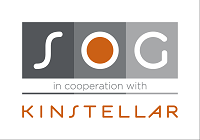Banking market in Serbia - Outlook for 2017
Source: eKapija
 Friday, 14.07.2017.
Friday, 14.07.2017.
 12:33
12:33
 Friday, 14.07.2017.
Friday, 14.07.2017.
 12:33
12:33
Illustration (Photo: Ti_ser/shutterstock.com)

Some of the most important deals which took place during this period are, in brief, as follows:
2015
UAE’s Mirabank, unit of Royal Group conglomerate, started with its regular operations. Turkey’s state-run Halkbank signed deal to buy majority stake in Serbian lender Cacanskabanka. The investment fund Advent International and the European Bank for Reconstruction and Development took over the Austrian state owned Hypo Group Alpe Adria, which now operates as Addiko bank.
2016
Two Serbian businessmen bought the subsidiary of Slovenian NKBM bank in Serbia which now operates as Direktna banka Kragujevac. Czech Expobank, owned by Igor Kim, bought Marfin bank in Serbia.
2017
Bank of China started with its operations in Serbia. AIK bank, the sixth largest bank in Serbia agreed takeover of Greek Alpha bank. Direktna banka Kragujevac bought 100 percent of the shares in Findomestic, a subsidiary of BNP Paribas.
Numerous changes are yet to come. Serbian banking market, which currently counts 31 active banks, is extremely fragmented. At the end of 2016, top ten banks had 77,4% market share, with only top 6 above 5% market share.
Profitability challenges such as: regulation, NPLs, fragmentation, overcapacity and competition, are still strong and it is almost impossible to predict their future development.
Pretax profit of all banks for 2016 is EUR 173 mil. 19 out of 31 banks generated profit (o/w 8 double digit profit). ROAE for the sector in the same period is 3,4% and ROAA is 0,7%. Loan loss provisions of the sector are EUR -329,7 mil.
Besides regular threats to revenues, there are constantly new ones pushing banks to adapt to the vivid market dynamic. Some of the most important threats include competition from fintech companies, consolidation, business model reassessment and growth.
Serbian banking market is still not under a direct influence of emerging fintech start-ups.
Though at least one third of banks is in the process of implementation of in-house solutions or actively cooperates with external providers.
Consolidation is certainly ahead, but it is still hard to estimate the speed of the process. Many of the factors influencing bottom line are outside of bank’s control, but this one seems as a safe way for long term profitable business. Still, it is a top level strategic decision and in direct correlation with other growth possibilities.
Organic growth is extremely slow and uncertain choice in respect to the current market trends. Low volumes and margins are increasingly under pressure due to the flat yield curve environment. Bank’s budgets and growth rates are not in line with market potentials which will lead to exit strategies or to the new mergers.
Need for continual reassessment of business models is constant. Sustainable growth and profitability depend on the strategic choice. Banks are under an enormous pressure to determine the strategy which will improve profitability. However, many banks still do not have clear image what their competitive advantages are and how to advance them. Sell of bad loans is becoming regular, but these will have to be substituted with new clients in order to secure old levels of cash flows.
Currently, out of total assets of the sector (EUR 26,3 bn), banks from Italy, Austria, France and Greece hold around 60% of the market (EUR 15,6bn). Serbian state is direct or indirect owner in six banks that have 17% of the market (EUR 4,5 bn).
Greek and Serbian banks (at least partially state owned) seem as a most probable two groups of banks in which sales or mergers might occur in relatively short time period.
There are three Greek banks (Eurobank, Vojvodjanska and Piraeus) which have around 10% market share (EUR 2,7 bn). Radovan Jelasic, former governor of National Bank of Serbia, now a member of the Hellenic Financial Stability Fund in Greece, confirmed in an interview that all Greek banks in Serbia are up for sale. It has been also stated that these potential sales are a part of Greece’s agreement with the European Commission, European Central Bank and the International Monetary Fund. This group of banks represent significant potential for further consolidation of the market.
Certainly, a major part of the market in queue for sale, merger or restructuring are banks directly or indirectly owned by the Serbian state. These banks have the following state participation:
1) Postanska and Srpska 70%
2) Komercijalna around 40%
3) Jubmes around 20%
4) MTS and Jugobanka KM are indirectly owned by the state (partially owned by state owned companies).
Total market share of all banks in this group is slightly above 17% (EUR 4,5 bn), but under significant influence of Komercijalna bank 12,4% (EUR 3,3 bn) and Postanska bank 4,1% (EUR 1,1 bn).
Some of the banks are working on strategical and operational improvements (Komercijalna, Postanska) which can be also interpreted as a window dressing and preparation for sales. There is no clear State strategy in respect to these banks, but Government is making steps forward to enable its potential exit. The new Regulation on the Manner and the Procedure of Trade of Stocks of the Banks Owned by Republic of Serbia which was rendered and came into force on 12th May 2017, may be a sign in that direction.
The Regulation prescribes the manner and the procedure of trade, outside of regulated market, the following stocks:
1) Stocks issued by the banks when the lawful owner of such stocks is Republic of Serbia, based on the Law Governing the Relations between the Federal Republic of Yugoslavia and Legal Entities and Banks within the Territory of the Federal Republic of Yugoslavia Being the Original Debtors or Guarantors toward the Paris Club and London Club Creditor, and
2) Stocks issued by the banks, when the lawful owner of such stocks is Republic of Serbia.
However, Article 57 of the Regulation states that the Regulation shall be also applied accordingly in cases of trade of the following stocks:
- Stocks issued by the banks, when the lawful owner of such stocks is Deposit Insurance Agency,
- Stocks issued by the banks, when the lawful owners of such stocks authorized the Deposit Insurance Agency to sell, in their name and on their behalf, those stocks to a third party, and
- Stocks issued by banks, when such trade is undertaken in the process of liquidating the assets of the banks in bankruptcy or liquidation proceeding in which the Deposit Insurance Agency act as a trustee.
The Regulation states that the Government of Republic of Serbia, pursuant to proposal of Ministry of Finance makes a decision to sell Stocks in some of the ways prescribed by the Regulation, but the main focus of the Regulation is selling the Stocks via tender procedure.
The Regulations goes to describe tender procedures in detail, by making a distinction between one-degree tender procedure and two-degree tender procedure.
Also, the Regulation prescribes the conditions of establishment of the tender commission, its functioning and composition.
We will see in near future whether the Serbian state will use this prescribed form in order to decrease its participation in bank’s ownership.
This year started well and it is not too optimistic to expect that further consolidation will continue. It is well known fact that some of the banks are considering to exit the market, which does not mean the lack of interest for investing in Serbia. It is just a sign that current level of fragmentation is unsustainable in the long run. Those who stay will be confronted with a huge challenge to act and change fast, same as for all other banks around the world.
Article by Samardzic, Oreski & Grbovic Law Firm.
Companies:
 Narodna banka Srbije Beograd
Narodna banka Srbije Beograd
 SOG in cooperation with Kinstellar
SOG in cooperation with Kinstellar
 Mirabank a.d. Beograd
Mirabank a.d. Beograd
Royal grupa Emirati
 Halkbank AD Beograd
Halkbank AD Beograd
 Advent International Boston
Advent International Boston
 EBRD Evropska banka za obnovu i razvoj Beograd
EBRD Evropska banka za obnovu i razvoj Beograd
 Addiko bank ad Beograd
Addiko bank ad Beograd
 Eurobank Direktna a.d. Beograd
Eurobank Direktna a.d. Beograd
 AIK Banka a.d. Beograd
AIK Banka a.d. Beograd
 Adriatic Bank a.d. Beograd
Adriatic Bank a.d. Beograd
 Bank of China Srbija a.d. Beograd
Bank of China Srbija a.d. Beograd
 JUBANKA A.D. BEOGRAD
JUBANKA A.D. BEOGRAD
 NLB Komercijalna banka AD Beograd
NLB Komercijalna banka AD Beograd
 Findomestic banka a.d. Beograd
Findomestic banka a.d. Beograd
 Međunarodni monetarni fond-MMF Beograd
Međunarodni monetarni fond-MMF Beograd
 Srpska banka a.d. Beograd
Srpska banka a.d. Beograd
 Alta banka ad Beograd
Alta banka ad Beograd
 Vojvođanska banka a.d. Novi Sad
Vojvođanska banka a.d. Novi Sad
 EUROPEAN COMMISSION Bruxelles
EUROPEAN COMMISSION Bruxelles
 Piraeus bank a.d. Beograd
Piraeus bank a.d. Beograd
 European Central Bank Germany - Evropska Centralna Banka
European Central Bank Germany - Evropska Centralna Banka
 Banka Poštanska štedionica a.d. Beograd
Banka Poštanska štedionica a.d. Beograd
Tags:
banking sector in Serbia
banks Serbia 2017
banks in Serbia
banking market in Serbia
National Bank of Serbia
NBS
Samardzic Oreski & Grbovic Law Firm
Mirabank
Royal Group conglomerate
Halkbank
Cacanska banka
Advent International
European Bank for Reconstruction and Development
EBRD
Hypo Group Alpe Adria
Addiko banka
NKBM
Direktna Banka Kragujevac
Expobanka
Marfin Bank
Bank of China
AIK Bank
Alpha Bank
Findomestic Bank
BNP Paribas
non performing loans
fintech startup
Eurobank
Vojvodjanska Banka
Piraeus Bank
Radovan Jelasic
European Commission
Eeuropean Central Bank
International Monetary Fund
IMF
Postanska Stedionica
Srpska Banka
Komercijalna Banka
Jubmes Bank
MTS Bank
Jugobanka KM
Regulation on the Manner and the Procedure of Trade of Stocks of the Banks Owned by Republic of Serbia
Comments
Your comment
Most Important News
Full information is available only to commercial users-subscribers and it is necessary to log in.
Follow the news, tenders, grants, legal regulations and reports on our portal.
Registracija na eKapiji vam omogućava pristup potpunim informacijama i dnevnom biltenu
Naš dnevni ekonomski bilten će stizati na vašu mejl adresu krajem svakog radnog dana. Bilteni su personalizovani prema interesovanjima svakog korisnika zasebno,
uz konsultacije sa našim ekspertima.


 Izdanje Srbija
Izdanje Srbija Serbische Ausgabe
Serbische Ausgabe Izdanje BiH
Izdanje BiH Izdanje Crna Gora
Izdanje Crna Gora


 News
News






